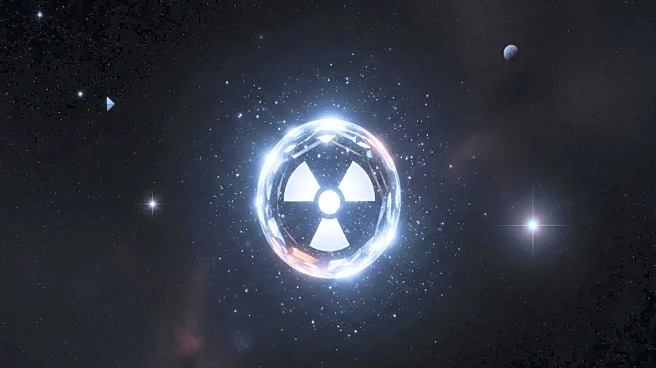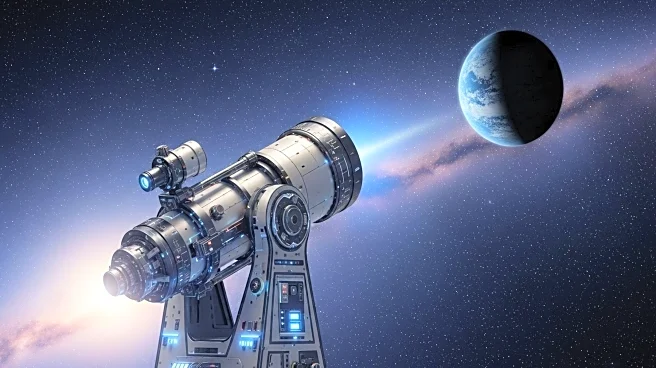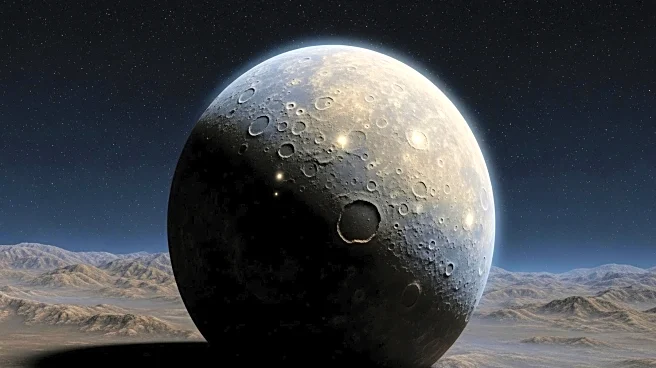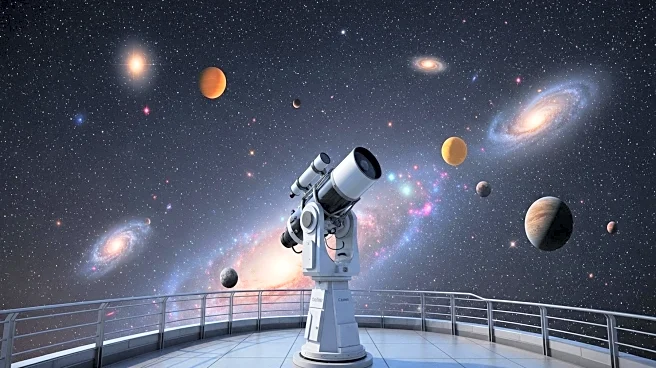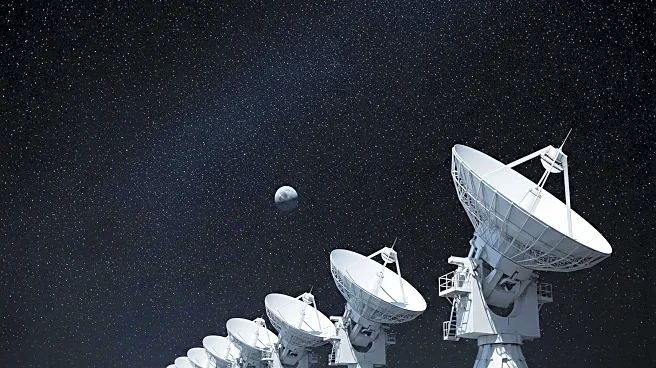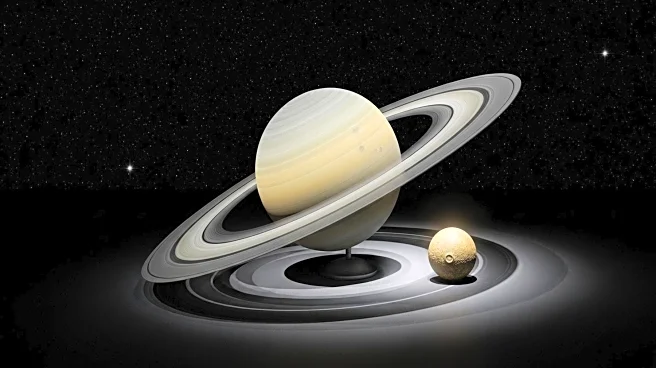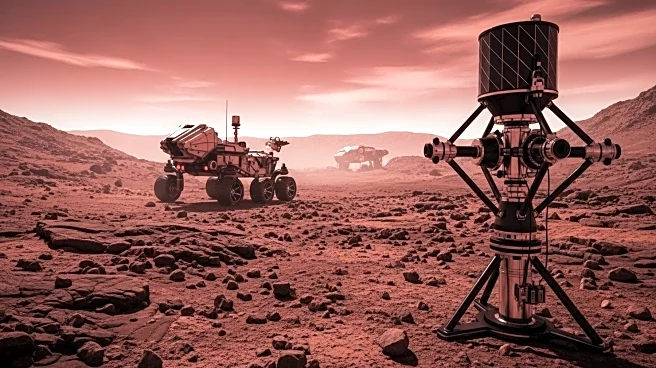What is the story about?
What's Happening?
Recent research based on data from NASA's Dawn mission suggests that the dwarf planet Ceres may have once had conditions suitable for life. The study utilized thermal and chemical models to simulate the evolution of Ceres's interior, revealing that heat from radioactive decay in its rocky core could have raised temperatures to over 550 Kelvin. This heating process, known as thermal metamorphism, released hot, mineral-rich water into a subsurface ocean, creating a chemical imbalance that could have provided energy for chemotrophic life. The study indicates that Ceres had liquid water, organic molecules, and a long-term chemical energy source, fulfilling key requirements for habitability. This potentially habitable period lasted hundreds of millions of years between 2.5 and 4 billion years ago, ending as the core cooled and hydrothermal activity ceased.
Why It's Important?
The findings are significant as they suggest that Ceres, the largest object in the main asteroid belt, once had all the necessary ingredients to support microbial life. This discovery adds to the understanding of habitable conditions beyond Earth, highlighting the potential for life in other parts of the solar system. The study also implies that other mid-sized, water-rich worlds could have experienced similar habitable periods, expanding the scope of astrobiological research. While there is no evidence of life on Ceres, the research supports theories about the potential for life in subsurface oceans on other celestial bodies, influencing future exploration missions and scientific inquiries into extraterrestrial life.
What's Next?
The implications of this study extend beyond Ceres, suggesting that similar processes could have occurred on other celestial bodies. Scientists may focus on exploring other mid-sized, water-rich worlds in the outer solar system to investigate their potential for past habitability. The ongoing analysis of data from the Dawn mission continues to provide insights into Ceres's history, and future missions may aim to explore these environments further. The study encourages a broader examination of the conditions necessary for life, potentially guiding the search for habitable zones in the universe.
Beyond the Headlines
The study raises ethical and philosophical questions about the definition of life and habitability. It challenges the traditional Earth-centric view of life, suggesting that life could exist in environments vastly different from those on Earth. The research also highlights the importance of understanding chemical energy sources as viable alternatives to sunlight for sustaining life. These findings could influence the criteria used to assess habitability in future space exploration missions, prompting a reevaluation of what constitutes a habitable environment.
AI Generated Content
Do you find this article useful?
